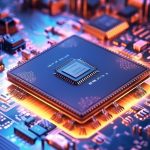Industry professionals and technology enthusiasts have gathered at RoboBusiness 2025, which highlights the current landscape for commercial robotics development. As the sector continues to advance, the event’s opening day brings together over 60 speakers, keynotes, and panels that cover both technical and business challenges. The bustling crowd signals growing interest from major and emerging players alike, and the busy expo hall floor offers attendees a hands-on look at products, networking, and demonstrations. Such large-scale gatherings provide critical context for ongoing trends in robotics, encouraging informed dialogue and practical learning. This year, specific emphasis is placed on artificial intelligence integration and lessons from real-world deployments, demonstrating the industry’s movement towards functional, applied robotics.
RoboBusiness events in prior years primarily focused on anticipatory technologies and exploratory innovation discussions. What stands out in the 2025 session is the increased presence of AI-oriented sessions and dedicated tracks for realistic deployment, signaling maturation in robotics. The growing involvement of firms such as NVIDIA, Agility Robotics, and ABB Robotics reveals a shift from speculative topics towards operational challenges and implemented solutions. Unlike earlier editions which leaned heavily on vision and prototype showcasing, the current offerings mirror immediate market needs and practical scaling. The structure of this year’s event appears more accommodating for startups and global participants, reflecting a maturing ecosystem that is more outward-looking and diversified in its content.
NVIDIA Sets the Stage for Physical AI Integration
Deepu Talla, vice president of robotics and edge AI at NVIDIA, opened the conference with a keynote focusing on the industry’s shift towards physical artificial intelligence. Talla elaborated on the speed at which NVIDIA is enabling robotics through its AI platforms, establishing momentum for further conversation throughout the day. In his own words, Talla remarked,
“Robotics now requires an integration of perception, reasoning, and action, and AI is the driving force behind this blend.”
The company’s influence within the community was evident, with follow-up discussions involving NVIDIA representatives as well as experts from Agility Robotics and The Robot Report addressing lessons learned from humanoid robot deployments.
What Sessions Address Sector’s Technical and Regional Gaps?
Breakout sessions addressed challenges spanning the evolution of sensors, safety protocols, and AI decision-making frameworks. The event included panels such as “Building the Future in Asia,” which examined Singapore’s role in robotics manufacturing, and “Evolution of Sensors for Agrobotics,” illustrating diverse application areas from agriculture to industrial process automation. Companies such as e-con Systems, Brightpick, and Harmonic Drive participated, offering perspectives on rapidly developing subsystems. Each session underscored how global collaboration is shaping robotics, and leaders shared both success stories and failures—key to guiding upcoming entrepreneurs. One speaker expressed,
“Only by examining both achievements and setbacks can the field advance with confidence,”
highlighting the value of candid reflection in technical progress.
Can Startups and Investors Leverage Insights from the Event?
Startups received dedicated attention through workshops and the annual Pitchfire competition, with advice coming from experienced founders and legal advisors. Sessions like “Startup Boot Camp” aimed to arm new ventures with practical tools for international growth, intellectual property management, and scaling. The dynamic between investors, such as Intel Capital and Mayfield Fund, and promising companies paved the way for further capital deployment and mentorship. Collaborative activities, networking receptions, and showcases were designed for both established firms and fresh entrepreneurs, offering opportunities to exchange strategies in real-time and potentially activate partnerships moving forward.
Overall, RoboBusiness 2025 reveals an industry focused on the operationalization and collaboration necessary for robotics commercialization. Sessions spanning natural language AI, simulation-to-reality reinforcement learning, and actuators signal deepening sophistication in both hardware and software. While product launches and marketing remain a component, greater emphasis is placed on curating actionable grassroots knowledge across fields like safety, sensor innovation, and system integration. For newcomers and longtime participants alike, the event serves as a barometer for where investments, research, and global networks are converging. Awareness of these insights can help organizations realistically plan their participation in the evolving commerce and technology sectors. Active engagement in such summits also identifies actionable opportunities for collaboration, risk management, and capability building—elements that remain crucial as robotics solutions become integral in more industries.










